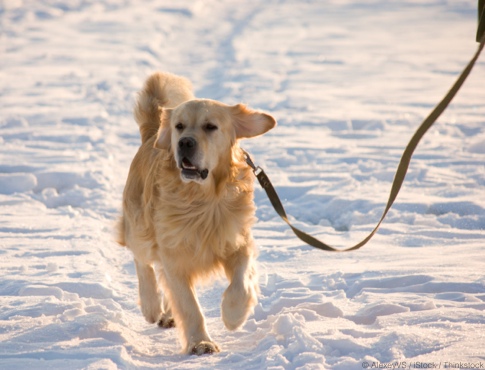How to Take Good Care Of Your Pet Dog in thewinter?

Unless you are among the fortunate few who live in a warm climate, the arrival of winter can evoke mixed feelings. Some regard it a nuisance that makes commuting tough, while others hail it as a season of cheer when you can have great fun building snowmen and taking part in a variety of winter sports, and still others find the snow drifts and bone-chilling weather conditions an unbearable nightmare. While most human beings are lucky enough to make suitable arrangements to counter the chill, you need to ensure that your pets too are lavished with a little extra care that will see them through. Some winter care tips for pet:
Outside or Inside
If your pet generally spends a lot of time out in the backyard, you may think of keeping her indoors when it is freezing outside. You pet dog can be really miserable if it gets damp in the snow and will tend to freeze. Even if they have a lot of fur, dogs really can’t keep warm enough by themselves for staying outside in the freezing cold for long. Your pet will really love you for giving her a nice warm shelter inside your home. You can also consider a draft-free shelter situated outside but you need to ensure that it complies with all applicable state laws.
Say No To Frozen Dinners
Your pet dog will be inclined to eat more food during the winter months in an attempt to keep warm, andyou will need to allow extra food in her diet. However, considering that they would be exercising much less when kept indoors, you also need to factor in the reduced demand for calories in their diet; otherwise, they will end up becoming tubby. You also need to pay special attention to ensure that your pet is able to drink as much water she wants to and does not have to face water bowls that are frozen. It can be really tough for a dog to lick a lump of ice to slake her thirst.
Dogs Do Not Make Good Snowmen
If your dog is habituated to a life outdoor even if it is freezing cold and icebound outside, then you should take care that she does not suffer from frostbite, which is a common condition as it is for human beings. Apart from a warm coat, you should take care to fit out your dog with warm waterproof booties, and even a hat to keep her head warm when walking outside. Keep a special watch out for frostbite symptoms such as blisters or skin that is firm and waxy.
Stay Away from Antifreeze
It is very common to use antifreeze liquids to keep the car’s radiator from becoming a solid block of ice. However, you need to be very careful that you do not leave it around carelessly or let it leak from the car. This is because the liquid is extremely poisonous and can lead to your pet dying even if it ingests a small amount. If you suspect antifreeze poisoning – your pet will begin to convulse or act as if it was intoxicated, then you should rush the dog to a veterinarian urgently. The best way is to make your garage a no-entry zone for your dog and also keep a strict watch when you are taking her for walks so that she does not wander.
Beware Of the Salt
If you reside in an area where heavy snowfall is a daily event, then it is quite likely that the roads and sidewalks will be sprinkled with salt to melt ice. However, the salts that are used, typically sodium or calcium chloride, can be quite harsh on the sensitive paws. So if you are going out for a walk, be sure to provide adequate protection to your pet’s paws with booties that are warm and waterproof.
Getting your pet ready for the winter is a matter of applying common sense. You need to know that your beloved pet will feel as cold and miserable in an icy and damp environment as you do, hence keeping it safe and warm should be your priority.
Author bio: Jake Friar is an experienced vet. Passionate about animal welfare, he is a frequent blogger on issues of animal well-being. You can read some of his recent articles on http://www.primpplay.com/.

